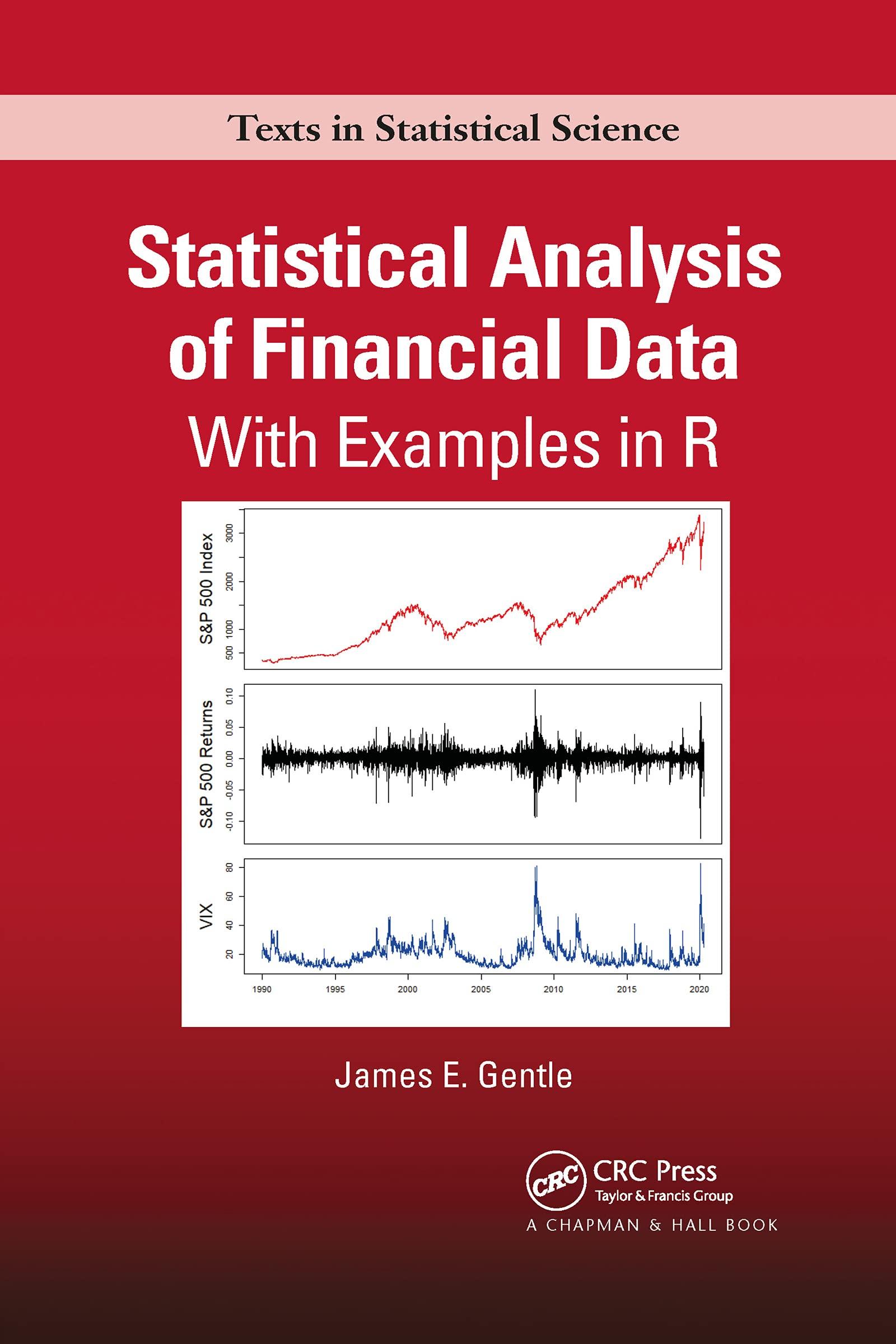Suppose the price of stock XYZ is ($ 100), suppose that the standard deviation of the daily
Question:
Suppose the price of stock XYZ is \(\$ 100\), suppose that the standard deviation of the daily returns of XYZ is 0.002 , and suppose that the risk-free interest rate \(r_{\mathrm{F}}\) is \(1 \%\).
(a) What is the (annualized) volatility \(\sigma\) of XYZ?
(b) Assume a unit of time as one year and a constant length of time intervals
\[ \Delta t=1 / 4 \]
a constant ratio of new value to old value following an up move of
\[ u=\mathrm{e}^{\sigma \sqrt{\Delta t}} \]
a constant ratio of new value to old value following a down move of \(1 / u\), and the probability of an up move of
\[ p=\frac{\mathrm{e}^{r_{\mathrm{F}} \Delta t}-1 / u}{u-1 / u} \]
Construct a binomial tree representing the possible trajectories of XYZ for one unit of time (four periods). Recall that under this model, the vertical scale in a tree representation is not linear.
(c) Suppose you owned a call option for XYZ at 103 for 251 days out (essentially one year) on the beginning date in this scenario. What percentage of the time would your option have been in the money on the date of expiration, according to the binary tree model?
(d) What is the fair value of a European call option for XYZ at 103 for 251 days out on the beginning date in this scenario?
Step by Step Answer:






